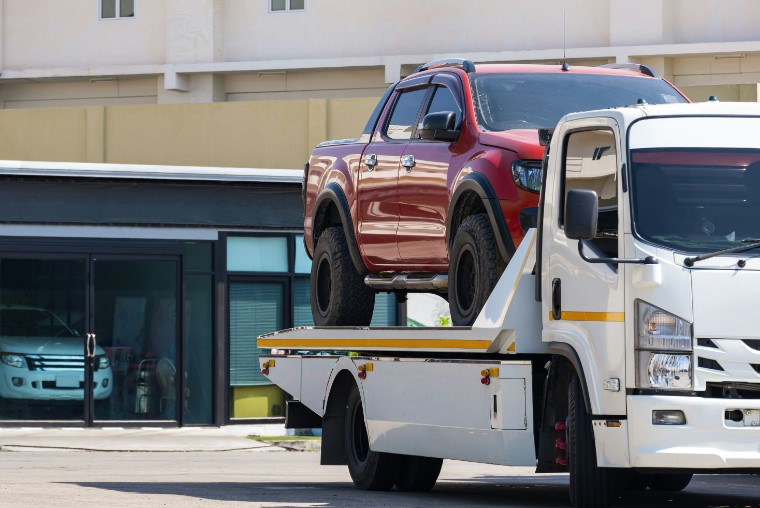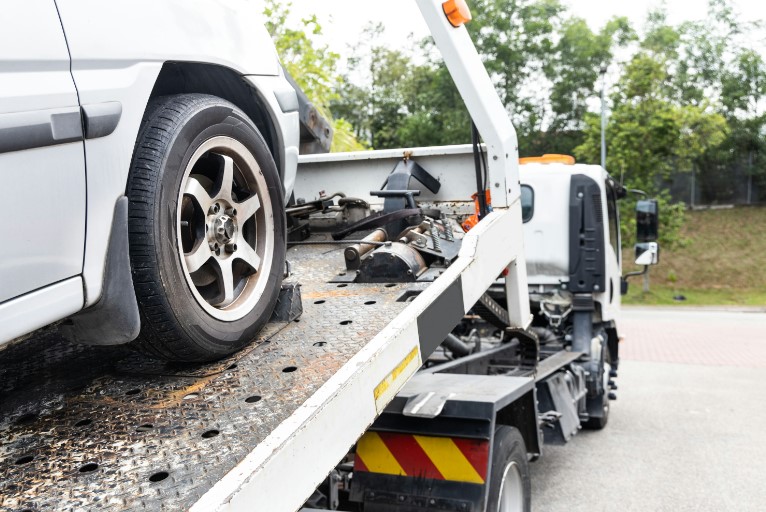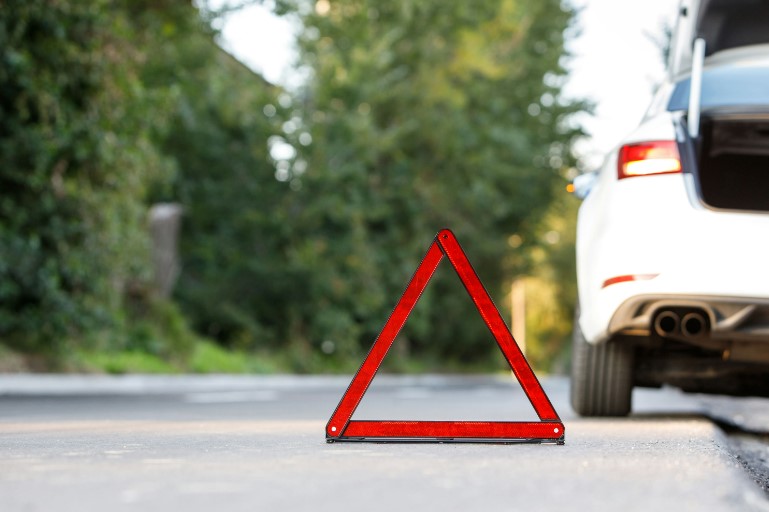

Traditional Towing Explained

If you picture a tow truck, there’s a good chance that the hook-and-chain is what’s in your mind. With this type, the operator will place a large hook on the bumper and wind a set of heavy-duty chains around your vehicle’s frame or axle. Then, using the boom built into the back of the truck, it winches the front tires off the road. (Your car may be towed backward if it’s a rear-wheel drive.) Most cars can be towed this way.
This kind of towing is great because of its simplicity, which generally makes it more cost-effective. It’s best for short distances and older, less complex vehicles. Because of the way the car is lifted and the fact that two wheels maintain contact with the road, there is a danger of damage to the suspension and undercarriage. However, a traditional tow truck can go where others can’t, retrieving vehicles even from uneven terrain.
What Is Flat Towing, Anyway?

What is a flat tow? This type of towing involves a flatbed truck. In essence, your vehicle gets to hitch a ride on the back of the truck, removing it from the road entirely for the trip to the auto body shop. The flatbed is equipped with a hydraulic system that creates a ramp so the car can be pushed, pulled, or driven onto it. The car is secured to ensure it doesn’t roll during the journey.
Since the car is in a normal parked position for the duration of the ride, it prevents additional damage and is excellent for longer distances. There’s no wear and tear, just a smooth journey. While all vehicles can be moved this way, it’s the perfect choice for low-riding sports models.

Safe & Reliable Towing, Every Time, With Coastal
When you know better, you do better. Never let anyone move your vehicle without your informed consent, whether it’s traditional or flat towing. When you call us, we’ll ensure you get the right type of tow for your vehicle and location. Our certified tow truck drivers will ensure you and your vehicle get where you need to be safely and efficiently. Get in touch for 24/7 assistance and professional service whenever you need it!

Frequently Asked Questions
Does flat towing take longer to set up?
Yes, because the tow truck driver must position and secure all four tires on the flatbed.
Are there weight limits for flatbed towing?
Yes – so it’s important to let your towing service know your vehicle type, especially if you have a heavier vehicle like an SUV or truck.
Is flat towing safer for vehicles with all-wheel drive (AWD) or four-wheel drive (4WD)?
Yes, flat towing is safer for AWD or 4WD vehicles because it avoids the damage to the drivetrain that could occur if the wheels remain in contact with the road.
How do I prepare my vehicle?
Before your car is towed, ensure it’s in park (or neutral for manual transmissions), and the parking brake is off. It’s also a good idea to remove personal items and lock the doors for security.
Contact us today for a free estimate or to schedule a service
Put your vehicle in the best hands. Wherever life finds you in New York, call on Coastal.